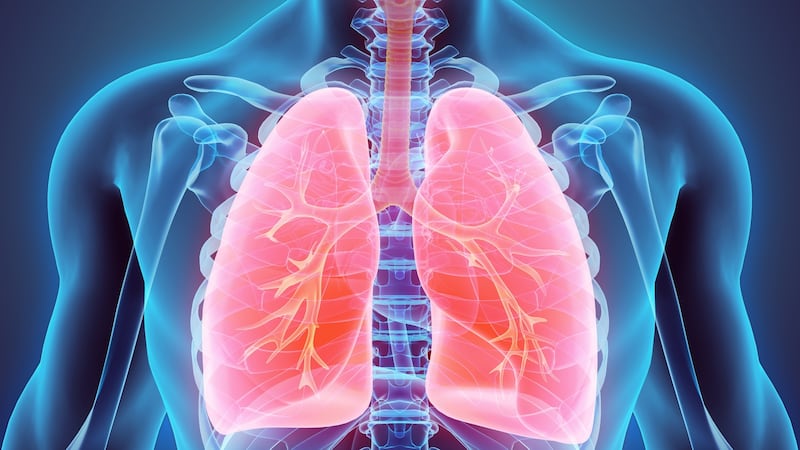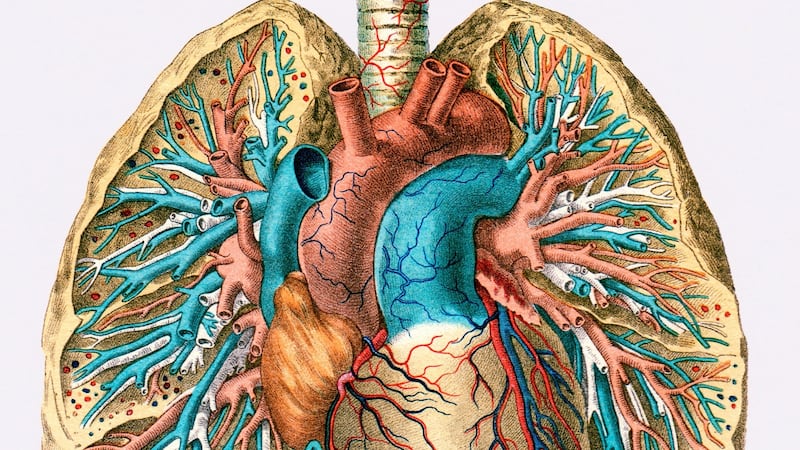Early on in the Covid-19 battle, doctors noticed an odd trend, where many patients were found with exceedingly low blood-oxygen saturation levels, yet they were not gasping for breath as would normally be expected.
Known as “silent hypoxia”, it is insidious, hard to detect and a killer, where patients do not present with typical acute respiratory distress syndrome (Ards), the lung failure known from the 2003 outbreak of the Sars coronavirus and other respiratory diseases.
Though their lungs are clearly not being oxygenated properly, patients are, nevertheless, alert and feeling relatively well, even as doctors debate whether to ventilate them. Too often, though, they show up late in hospital.


Now, Irish doctors in the Royal College of Surgeons have developed an early-warning system that will be rolled out in Irish hospitals this week, according to Prof Richard Costello, a Royal College of Surgeons in Ireland respiratory medicine consultant based in Beaumont Hospital.
The rollout follows success in identifying patients at risk of sudden deterioration in validated tests, outlined in a research paper by Prof Costello, cardiologist Dr Tom McEnery and Dr Ciara Gough published in the Lancet.
The three-pronged strategy approved by the Health Service Executive deploys new digital technology that enables enhanced “non-invasive ventilation” of patients before they may have to go into intensive care. Avoiding use of a ventilator is a huge win for both patient and the healthcare system.
Pulse oximeter
In addition, it ensures that ICUs are better able to manage surges. Ultimately, it is leading to better outcomes for patients, who go from feeling fine one day to needing hospitalisation the next, Prof Costello told The Irish Times.
Working together, a new app called Accord and a pulse oximeter remotely and simply monitor patients’ oxygen status, delivering vital information that is evaluated by an algorithm to determine a patient’s Covid clinical index (CCI).
“You can anticipate which one needs ICU . . . It can be predicted 24 hours before they go to ICU,” says Prof Costello, in comparison with just an hour, as was often the case, “which is no notice at all” and heaping pressure on ICUs.
The second feature is earlier use of “awake proning/repositioning”, where patients lie on their front, face down which improves oxygen flow to the lungs even before going into ICU where it is standard practice.
Finally, another app monitors patients later on, especially when they have recovered sufficiently to go home so there are no late complications.
Last week, emergency physician Richard Levitan at New York's Bellevue Hospital told the New York Times about the strain posed there by silent hypoxia: "We are not detecting the deadly pneumonia the virus causes early enough . . . we could be doing more to keep patients off ventilators – and alive.
“Covid-19 overwhelmingly kills through the lungs. And because so many patients are not going to the hospital until their pneumonia is already well-advanced, many wind up on ventilators, causing shortages of the machines. And once on ventilators, many die.”
Everyone who tests positive for Covid-19 should be monitored by an oximeter for a fortnight. So, too, should anyone untested but with a cough, fatigue or fever. So, too, should those with a negative swab test because they are only about 70 per cent accurate, says the New York-based doctor.
The Irish advances, Prof Costello believes, were possible because many doctors here have a strong scientific background and appreciation of clinical research, applying a basic research/first-principles approach to a disease never seen before.
‘Thin air’
When cases arose in Italy, they reached out to Italian colleagues. The disease profile was different; the silent hypoxia was akin to high-altitude sickness, where patients felt they were breathing "thin air".
The need for non-invasive methods quickly became clear once the pressure on ICUs was seen. The Accord app was prompted by Prof Costello’s interest in digital medicine and the realisation that the traditional ward round dressed in PPE was not possible.
It was built pro bono by S3 Connected Health in little more than a week. What he describes as "a Bloomberg terminal" processes the data produced. Patients are classified as red, orange and green based on hypoxia.
The second app developed by patientMpower, which is no more complicated than using a thermometer and displays oxygen saturation and pulse rate in seconds, helps to govern the flow of patients out of hospital, and home, but all the time constantly monitored.
Pulse oximeters are extremely reliable in detecting oxygenation problems and elevated heart rates – and are routinely used in the treatment of kidney and heart patients but in this instance are adapted for Covid-19.
The experience of Italian doctors highlighted the need to change patients’ positions in bed to improve oxygen flow to “the better part of the lungs”. This begins now before patients ever get to ICU: “In some cases, we did not have to send patients to ICU,” Prof Costello notes.
Consultant in respiratory medicine at Bons Secours Hospital in Cork Oisín O’Connell said the new scoring system is much more sensitive in mapping the risk of ending up in ICU and in determining the best oxygen strategy for patients.
During the early stages in Italy, ventilation was considered the best approach, says Mr O’Connell. Now, doctors realise that it should be avoided where possible – though ventilators still have a role when critically ill people are experiencing “inflammatory cascade”.
Vital organs
Silent hypoxia is not new. There are other conditions in which patients are extremely low on oxygen but do not feel any sense of suffocation or lack of air. Some congenital heart defects cause circulation to bypass the lungs, meaning the blood is poorly oxygenated.
Normal blood-oxygen levels are about 97 per cent. Concern rises when the figure drops below 90 per cent as the brain does not get enough oxygen, and patients experience confusion or lethargy. Vital organs are damaged when it drops into the low 80s.
In New York, Dr Levitan said some patient were without respiratory complaints or breathing difficulties, even though their chest X-rays showed diffuse pneumonia and their oxygen was below normal. By the time they had trouble breathing, the only option was ventilation.
Resources needed for patients on ventilators are staggering, he added. Vented patients require multiple sedatives to ensure that they do not buck the vent, or accidentally remove their breathing tubes.
They need intravenous (IV) and arterial lines, IV medicines and IV pumps, too. In addition to a tube in the trachea, they have tubes in their stomach and bladder. Teams of people are required to care for each patient, turning them frequently during the day. – Additional reporting New York Times










